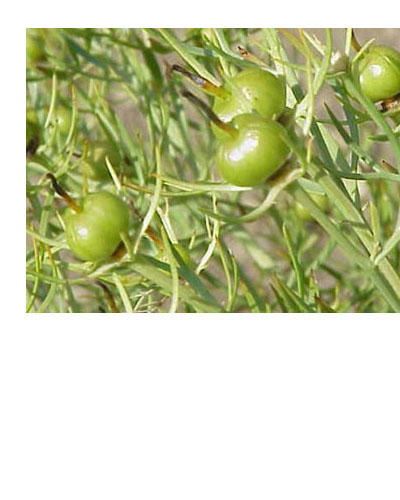Harmal
Latin: Peganum Harmala
Therapeutic Action:
Desptie its history as a euphoric and purpotedly aphrodisiac herb, harmula is little used in contemporary western herbal medicine due to potentialtoxicity. The treat have to be taken to treat eye disorders and to increase the colume of breast milk production. Antitumer, Antiviral, Antibacterial, Aphrodisiac, Aromatic, Dye, Economic, Medicinal, Psychotropic. Peganum harmala is an entheogen proposed as the sacred Zoroastrian (Vedic) plant Haoma (Soma).The plant is used traditionally as an emmenagogue and an abortifacient agent in the Middle East and North Africa. The fruits of Peganum Harmala are the source of a red dye and an oil. The esteem in which Peganum Harmala is held amongst peoples of the East is extraordinary. Most commonly it is used as an incense. Although there are repeated but vague reports of the employment of Peganum harmala as a traditional hallucinogen, its actual narcotic use in inducing visions has not yet been established beyond a doubt. It certainly has some mindaltering effects including sedation. Medicinal Uses Disclaimer Abortifacient; Alterative; Aphrodisiac; Digestive; Diuretic; Emmenagogue; Galactogogue; Hallucinogenic; Narcotic; Ophthalmic; Parasiticide; Uterine tonic; Vermifuge. Alterative[46, 169]. The fruit and seed are digestive, diuretic, hallucinogenic, narcotic and uterine stimulant[192, 238]. They are taken internally in the treatment of stomach complaints, urinary and sexual disorders, epilepsy, menstrual problems, mental and nervous illnesses[238]. The seed has also been used as an anthelmintic in order to rid the body of tapeworms[240]. This remedy should be used with caution and preferably under the guidance of a qualified practitioner since excessive doses cause vomiting and hallucinations[238]. The seeds contain the substance 'harmine' which is being used in research into mental disease, encephalitis and inflammation of the brain[192]. Small quantities stimulate the brain and are said to be therapeutic, but in excess harmine depresses the central nervous system[192]. A crude preparation of the seed is more effective than an extract because of the presence of related indoles[192]. Consumption of the seed in quantity induces a sense of euphoria and releases inhibitions. It has been used in the past as a truth drug[169, 187]. The oil obtained from the seed is said to be aphrodisiac[192]. The oil is also said to have galactogogue, ophthalmic, soporific and vermifuge properties[192]. The seed is used externally in the treatment of haemorrhoids and baldness[238]. The whole plant is said to be abortifacient, aphrodisiac, emmenagogue and galactogogue[240]. A decoction of the leaves is used in the treatment of rheumatism[240]. The root has been used as a parasiticide in order to kill body lice[240]. It is also used internally in the treatment of rheumatism and nervous conditions[254].
References:
- Nadkarni, Vol I. Page 927-929
- Duke, Page 352-353
- Nadkarni, Vol I, Pages 926 –929
Used in:
- Femitona Tablets
- Tense Freee Capsule
- Cufsil Syrup
- Kufrex Syrup

Copyright 2013 Unexo Laboratories Pvt. Ltd. All Rights Reserved. Designed & Developed By: Credence Technologies


